These little birds are slight of build and lightweight, yet incredibly skilled aerial predators. Both the smallest, and most common falcon in North America, the American kestrel has undeniable cute factor. These skilled and adorable hunters are incredibly interesting animals! Read on to learn about the America kestrel.
Description of the American Kestrel
American kestrels are beautiful little birds. They are about the size and weight of a dove, with a pair of talons and a sharp, hooked beak. They have an orange/red colored body, slate gray wings (in males) and head, and barring across their plumage. They have cream/white patches on their cheeks, with two black patches on either side.
Interesting Facts About the American Kestrel
Though small, kestrels are incredibly agile and precise predators. They are capable of some incredible feats, and have a number of adaptations aiding their survival.
- Favorite Foods – Kestrels in general will feed on a variety of different prey, but individual kestrels can have “favorite” foods. One kestrel may specialize in catching lizards or snakes, while its neighbor prefers catching small birds in flight.
- Hover Hunting – While hunting, kestrels generally prefer to choose a tall perch to wait for prey to show itself. They will use this perch as a vantage point, and swoop down on the unsuspecting animal when they spot it. In areas without useful vantage points, American kestrels have been know to hover above grasslands while searching for prey.
- Kestrels are Sports Fans! – While they aren’t particularly interested in who is playing or what is happening, kestrels are attracted to outdoor sports stadiums. The powerful lights attract a multitude of insects, allowing the kestrels to find an easy feast.
- Ultraviolet Dinner Bell – Unlike humans, kestrels are capable of seeing ultraviolet light. This allows them to detect the urine trails of some of their prey. For example, voles (a small mammal) leave behind a trail of urine when they run. This allows the kestrels to simply follow the trail to dinner!
Habitat of the American Kestrel
American kestrels are widely distributed, and can be found in a variety of different habitats. They tend to frequent open grasslands or prairies, the edges of forests, in cities, and on farmland. They will occasionally be found in more enclosed forests or woodlands.
Distribution of the American Kestrel
American kestrels can be found across the entirety of the United States, and in most places they can be seen year-round. These falcons can also be found across most of Canada and into Alaska, excluding some of the northernmost regions. Their range also spreads south into Mexico, some areas of Central America, and South America.
Diet of the American Kestrel
Large insects are the American kestrel’s favorite prey. Most large insects don’t require much of a battle, while still providing enough nutrition to make hunting worthwhile. They will also feed on small mammals, birds, and reptiles.
American Kestrel and Human Interaction
American kestrels are the favorite bird of the amateur falconer. Falconry is the sport of training birds of prey to hunt small animals, mainly other birds. It is sometimes used to aid in the eradication of invasive species. American kestrels are relatively easy to tame, and are very commonly used in falconry. This practice is regulated via permits, and most individuals come from captive breeding programs, rather than reducing wild populations.
Unfortunately, some kestrel populations have been decreasing in abundance due to indirect human interaction. Deforestation, land development, and pollution all negatively impact kestrel populations. Fortunately, the introduction of nest boxes to offset habitat destruction has been relatively successful.
Domestication
These falcons could be considered partially domesticated, but only for a short period of time. They have been selectively bred for a docile personality, hunting skill, and trainability.
Does the American Kestrel Make a Good Pet
Only to a person capable of providing the kestrel with everything it needs. Kestrels require a varied diet, plenty of flying space, and someone capable of spending time taming and training them.
American Kestrel Care
In human care, kestrels are provided with a variety of food items. They are typically fed mice, usually pinky or small sized, insects, and occasionally chicks. All meats are previously frozen, and thawed before consumption. This is much safer for the bird, as live prey can injure them, or contain parasites that could infect the bird. They are also provided with adequate flying space, and work with their keepers on training for handling and flying.
Behavior of the American Kestrel
Kestrels spend lots of time searching for prey. They are actually something of an ambush predator. Most kestrels choose a tall branch and watch vigilantly for prey. When they spot a likely food item, such as a big juicy grasshopper, they will dive from their branch and make their kill on the ground. They will also catch food in midair.
Some populations of kestrels are migratory, and “fly south for the winter” as the saying goes. In these populations, the males reach the wintering grounds before the females, and when the females arrive they choose a mate. Courting pairs will perform aerobatic displays to impress one another.
Reproduction of the American Kestrel
American kestrels do not build traditional nests. Rather, they choose hollowed trees, or abandoned nests of other birds. They lay an average of four or five eggs, and incubate these eggs for about a month. It only takes a month for the hatchlings to fledge and leave the nest.

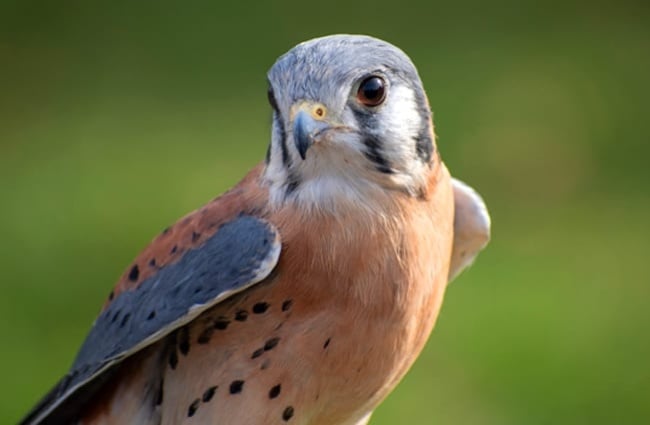
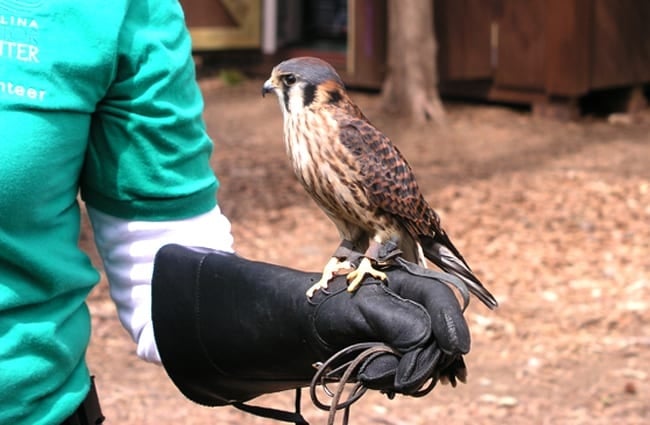
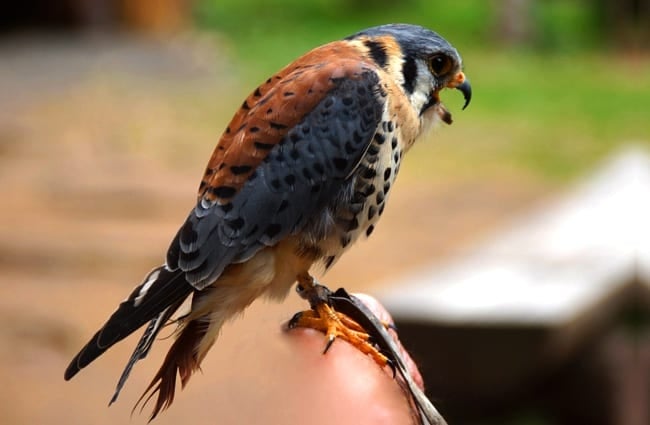
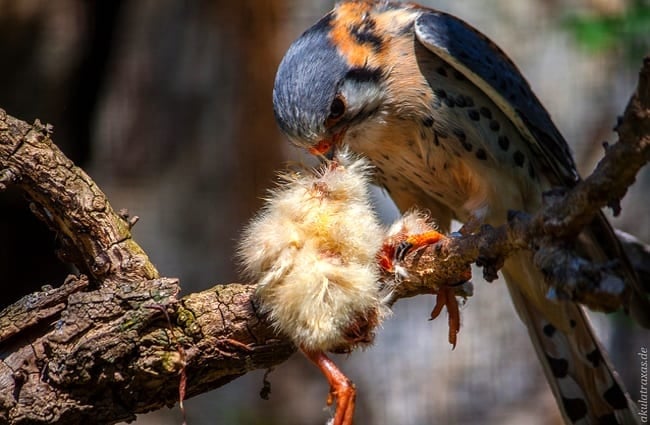
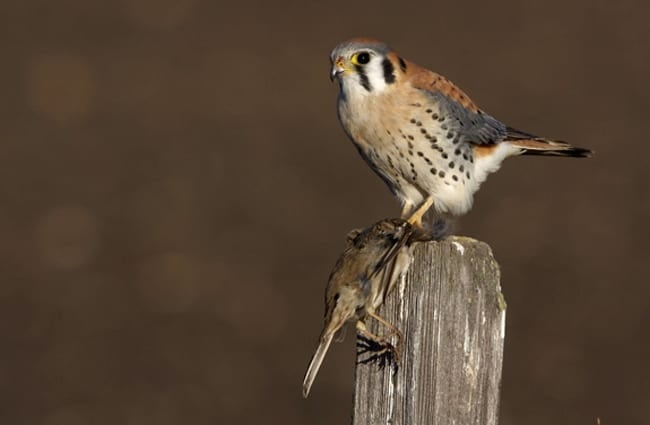


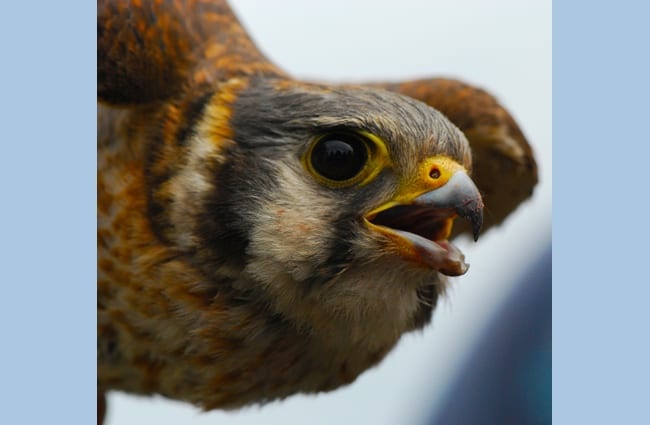
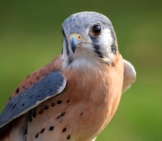
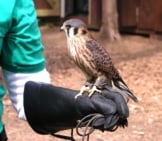
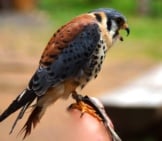


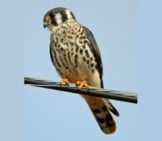
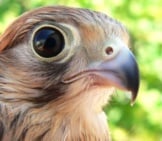
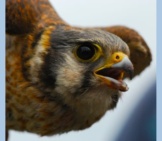
![Red Angus Closeup of a beautiful Red Angus cowPhoto by: U.S. Department of Agriculture [pubic domain]https://creativecommons.org/licenses/by/2.0/](https://animals.net/wp-content/uploads/2020/03/Red-Angus-4-238x178.jpg)


![Red Angus Closeup of a beautiful Red Angus cowPhoto by: U.S. Department of Agriculture [pubic domain]https://creativecommons.org/licenses/by/2.0/](https://animals.net/wp-content/uploads/2020/03/Red-Angus-4-100x75.jpg)

